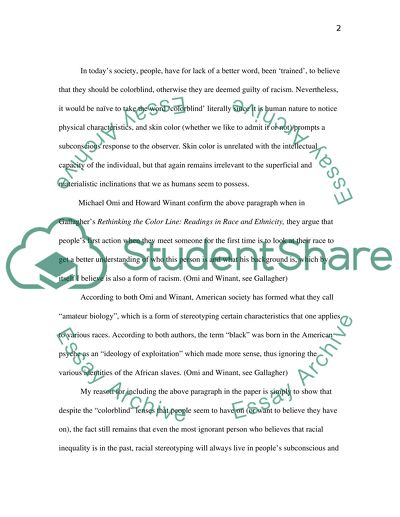Cite this document
(“Colorblindness and the New Racism Essay Example | Topics and Well Written Essays - 1250 words”, n.d.)
Retrieved from https://studentshare.org/sociology/1429537-colorblindness-and-the-new-racism
Retrieved from https://studentshare.org/sociology/1429537-colorblindness-and-the-new-racism
(Colorblindness and the New Racism Essay Example | Topics and Well Written Essays - 1250 Words)
https://studentshare.org/sociology/1429537-colorblindness-and-the-new-racism.
https://studentshare.org/sociology/1429537-colorblindness-and-the-new-racism.
“Colorblindness and the New Racism Essay Example | Topics and Well Written Essays - 1250 Words”, n.d. https://studentshare.org/sociology/1429537-colorblindness-and-the-new-racism.


